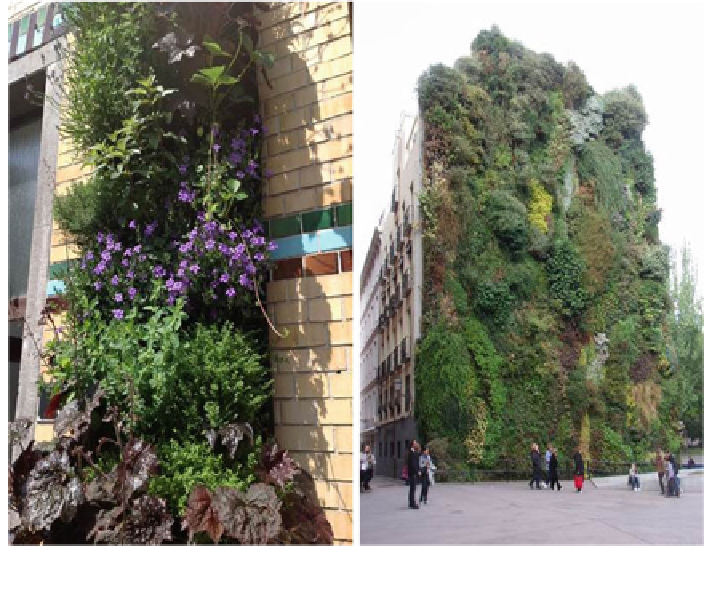Environmental Engineering Reference
In-Depth Information
Fig. 6.17 Left photo example of a living wall (felt layers) attached to a façade in the inner city of
Antwerp (Belgium). Right photo living wall system in the inner city of Madrid (Spain)
6.6 Conclusions and Reflection
In the previous article, the author attempted to demonstrate the value of reintro-
ducing vegetation to the surfaces of urban buildings and their related spaces.
The ecological and environmental benefits of a green building envelope include
the improvement of air quality and the reduction of pollution. The advantages are
mainly related to the reduction of fine dust levels (Ottelé et al.
2011
a), increased
biodiversity (Köhler
1993
), and reduction of the heat island effect in urban areas
(Taha
1997
; Onishi et al.
2010
). This occurs thanks to the lower amount of heat
reradiated by greened surfaces and humidity affected by the evapotranspiration
caused by plants (Scudo and Ochoa De La Torre
2003
). This process also allows
indirectly to save considerable energy supplied to the building (Dunnett and
Kingsbury
2004
; Köhler
1993
) as the plants and the growing medium provide
insulation and shade, which can reduce, especially in the Mediterranean area,
energy needed for cooling (Wong et al.
2009
). Besides these benefits, social and
economical advantages of greening systems are also involved, including: the real
estate market, greater durability of buildings, and the better psychological state of
citizens (Köhler
1993
; Dunnett and Kingsbury
2004
; Johnston and Newton
2004
).

Search WWH ::

Custom Search